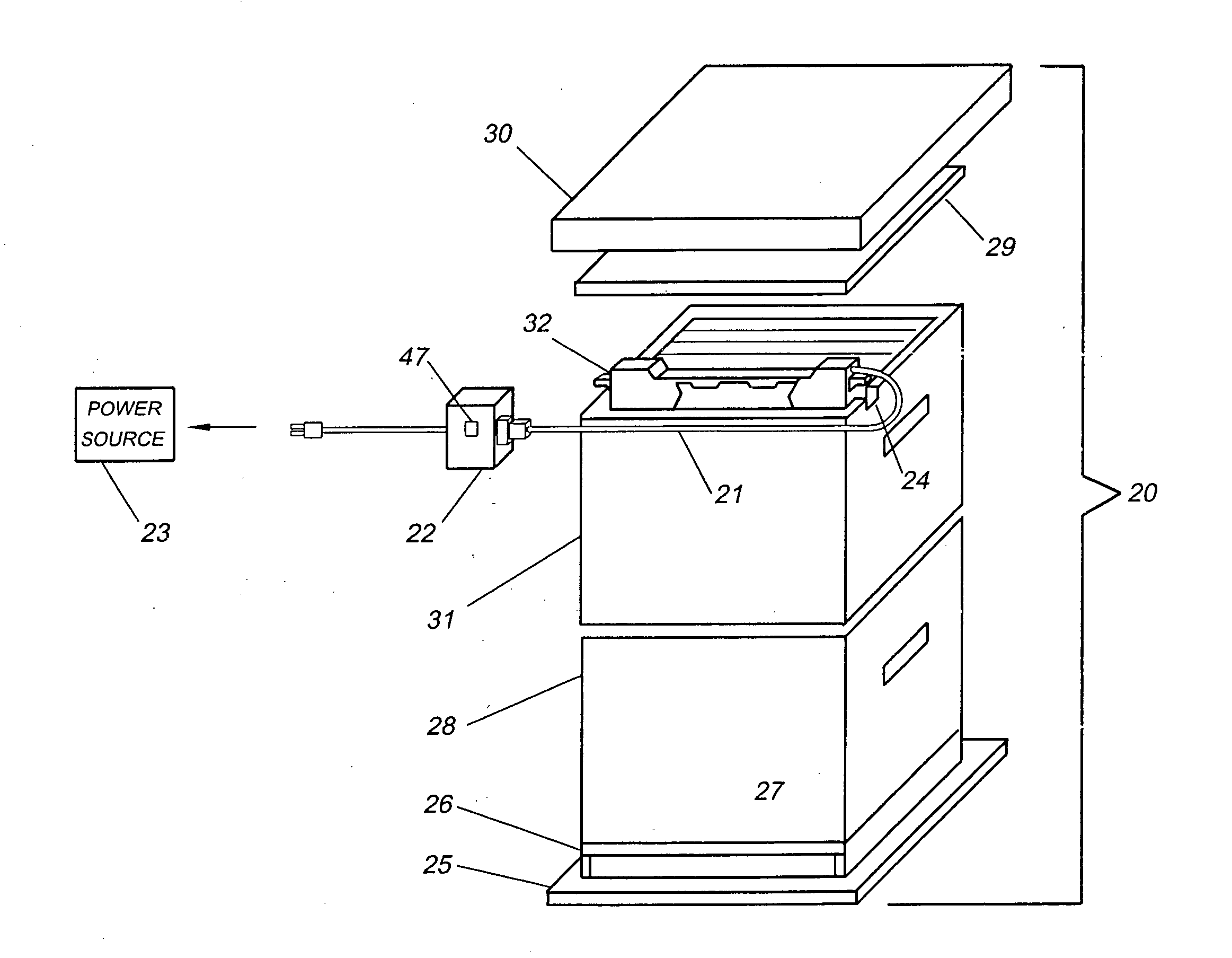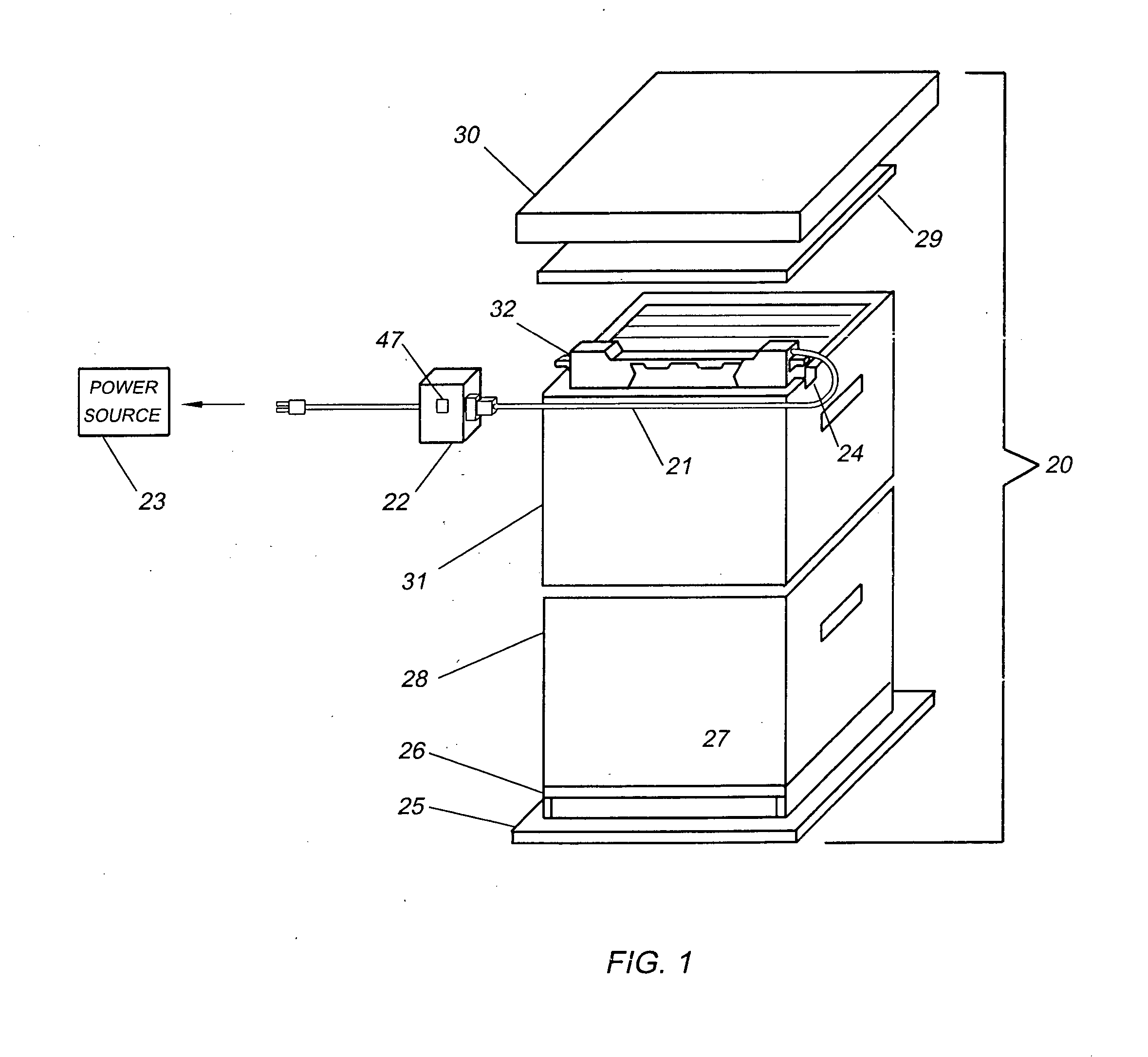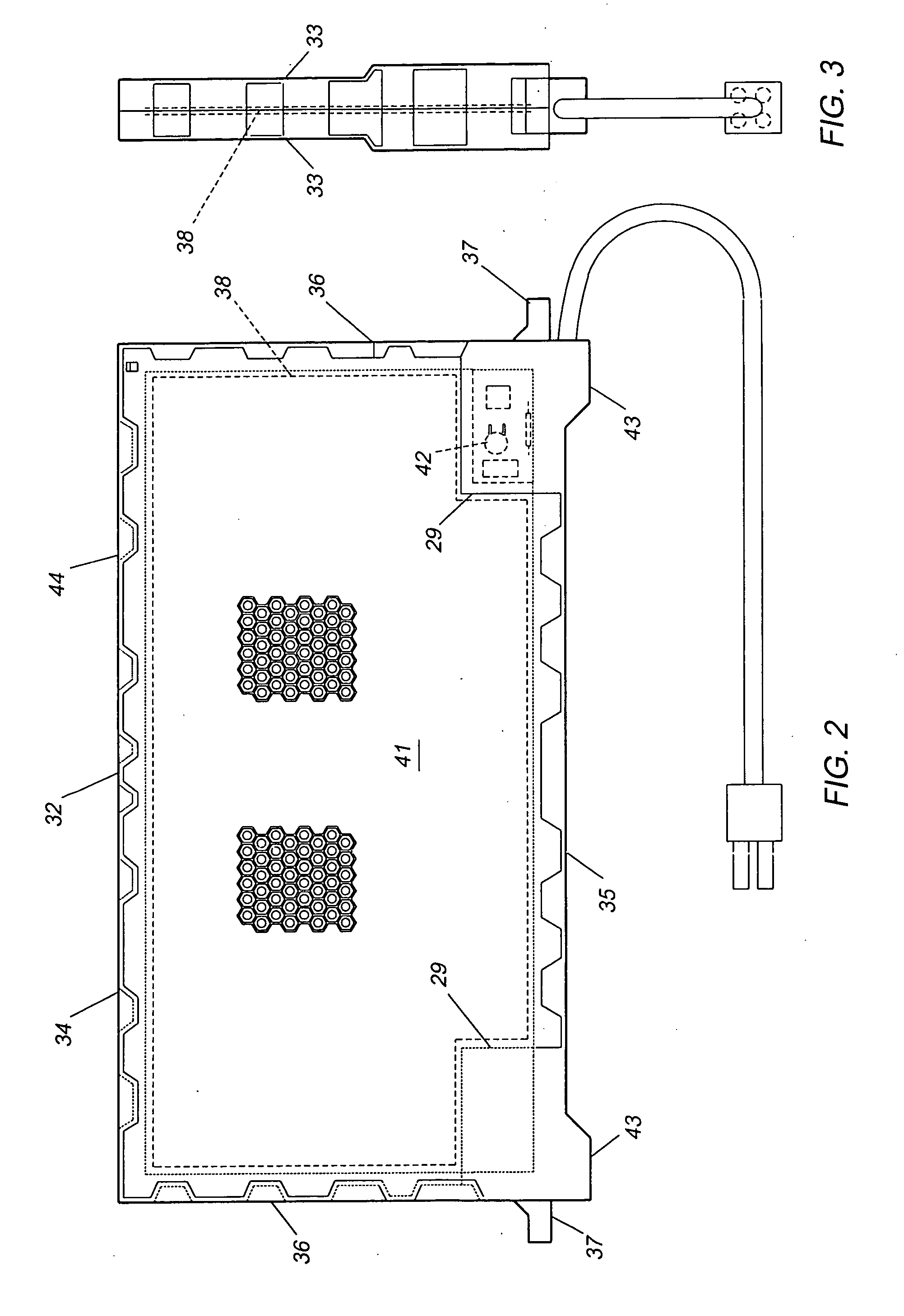Beehive frame and comb foundation for controlling varroa mites
a technology of comb foundation and beehive, which is applied in the field of beehives, can solve the problems of not providing a means for economically treating multiple combs, not providing a means for monitoring the performance of mites, etc., and achieves the effects of reducing the cost of practicing in the u.s., improving performance, and reducing the cost of practicing
- Summary
- Abstract
- Description
- Claims
- Application Information
AI Technical Summary
Benefits of technology
Problems solved by technology
Method used
Image
Examples
Embodiment Construction
[0036]Referring now to the drawings wherein like numerals designate like and corresponding parts throughout the several views, in FIG. 1 is shown a beehive commonly referred to by the name of its inventor, Rev. Lorenzo Langstroth as a “Langstroth Hive”20 which incorporates the present invention.
[0037]One distinguishing feature of the hive 20 is an electrical cable 21 which is connected to a frame and comb foundation 32 in a brood box 31 and a power source 23 such as a battery. The cable 21 passes through a notch 24 in the side of the hive 20 and is connected an ECU 22 in the brood box 31. The hive 20 has a landing 25 or base board 26, an opening 27 in the bottom board 26 for bees to get into and out of the hive 20, brood boxes 28 and 31 where a queen bee lays her eggs, an inner cover 29 and an outer cover 30. A raised portion of the frame and comb foundation 32 is shown exposed in the upper brood box 31. When the hive 20 is in use the frame and comb foundations 32 is entirely in the...
PUM
 Login to View More
Login to View More Abstract
Description
Claims
Application Information
 Login to View More
Login to View More - R&D
- Intellectual Property
- Life Sciences
- Materials
- Tech Scout
- Unparalleled Data Quality
- Higher Quality Content
- 60% Fewer Hallucinations
Browse by: Latest US Patents, China's latest patents, Technical Efficacy Thesaurus, Application Domain, Technology Topic, Popular Technical Reports.
© 2025 PatSnap. All rights reserved.Legal|Privacy policy|Modern Slavery Act Transparency Statement|Sitemap|About US| Contact US: help@patsnap.com



